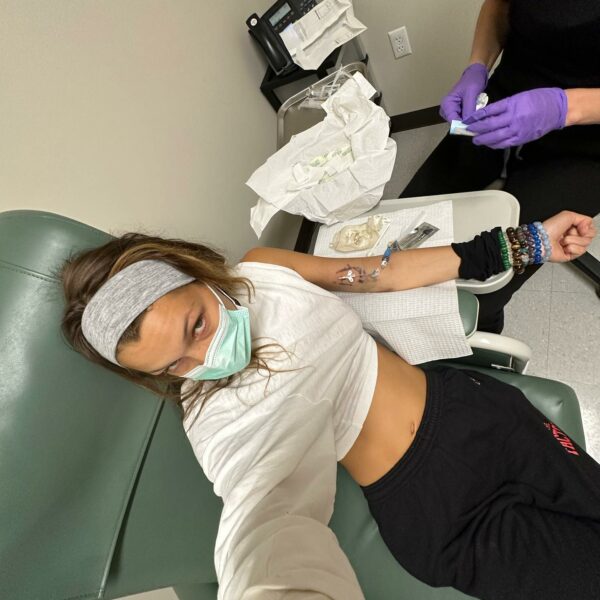There are certain ingredients in skincare that we hear about over and over again, and we kinda know what they are, but mostly we just dutifully follow along with whatever our favorite skinfluencers are plugging. Peptides … those sound, hydrating? Anti-aging? Something to do with protein?
Peptides are amino acids. Amino acids are the building blocks of specific proteins that are vital to the elasticity and support of the epidermis—think collagen and elastin fibers. While using peptides won’t automatically mean an explosion of collagen production, it does aid in promoting synthesis over time and can give the appearance of firmer skin, and even fewer breakouts.
Peptides act as biological messengers. Every cell in our body operates by way of peptides—they help construct enzymes, help hormones do their job, and act as a source of energy. But slathering peptides onto our skin doesn’t just mean we immediately integrate and simply have more peptides present in our skin.
Because collagen molecules are too large for our skin to absorb, peptides are the perfect gateway. Our skin happily slurps these smaller molecular structures right up. Our cells then see these foreign peptides as a message. This sends a signal that we need healing, and when our skin needs healing and protection, it creates more collagen.
Similar to microneedling or microdermabrasion, when we trigger small injuries so that our skin is urged to promote healing via collagen synthesis, peptides turn on the same signal. They basically trick the skin into promoting collagen synthesis. This is excellent for strengthening the skin barrier, and while anyone can benefit from a stronger skin barrier, it’s extra useful for those with sensitive skin, or those damaged by sunburns, over-exfoliation, or adjusting to a new retinoid.
Not all peptides were created equal, however. They are typically divided into four types: signal peptides, enzyme-inhibitor peptides, neurotransmitter-inhibitor peptides, and carrier peptides. Signal peptides are the kind of cellular peptides we are looking for if we want to signal our skin to promote healing tactics. Enzyme inhibitors are also great at inhibiting the loss of collagen, while neurotransmitter peptides can block the release of compounds that cause muscle contraction, having a Botox-like effect. Carrier peptides deliver nutrients, like trace minerals, to the skin. All of these are very functional, but signal peptides will likely show the most long-term effects.
That’s why in the Poosh Shop, we started stocking both the TAHNYC Niacinamide 10% + Peptides for Acne and TAHNYC Niacinamide 5% + Peptides for Anti-Aging. Both are filler-free, highly concentrated formulas with cellular signal peptides that will inhibit the loss of collagen and elastin and promote healing. This means major plumping action, and even the smoothing of acne scabs, scars, and future breakouts. These particular formulations can also reduce age spots and UV damage, as well as hyperpigmentation for an all-over, even glow.
Niacinamide is an incredible ingredient to aid in not only the absorption of your peptides, but also in the effectiveness. Not all ingredients will pair well with peptides, and some, like vitamin C, will actually oxidize and cancel out the effects. So, be careful what you use in tandem with your peptide products, and instead look for products that are already combined safely with other actives for profound efficacy.
Shop our skincare collection:
Up next, be the first to know our weekly content and sign up for our Poosh newsletter.





































